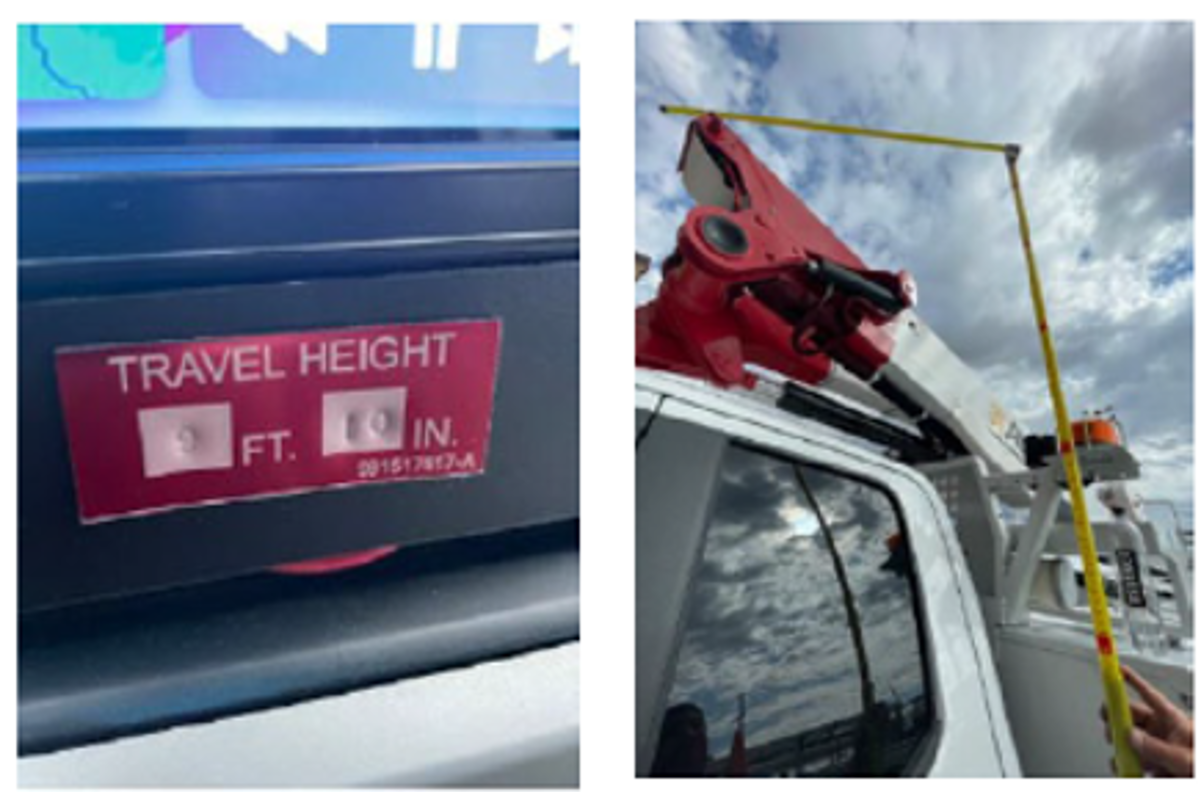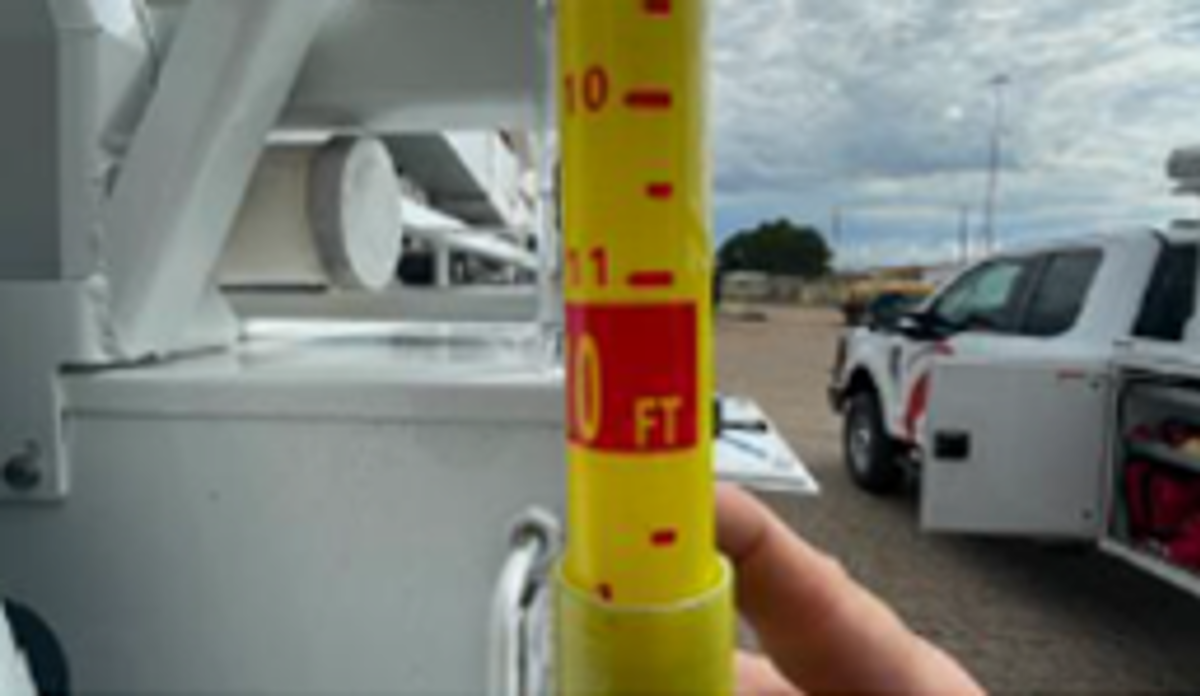Vital safety information (height of vehicle) found incorrect
- Safety Flash
- Published on 27 November 2024
- Generated on 17 December 2025
- IMCA SF 23/24
- 2 minute read
Jump to:
“Height of vehicle” information displayed on a truck, was found to be incorrect.
What happened?
An IMCA member’s contractor in the United States reports an incident in which it was discovered that the “height of vehicle” information displayed on a truck, was found to be incorrect. A worker was moving a light industrial vehicle (a “bucket truck” with a bucket on a folding hydraulic arm) when the correctly stowed folding arm came into contact with an overhead structure. There was no damage.


What went wrong?
On investigation, it was found that the stamped traveling height on the truck was different from the actual traveling height. The actual traveling height was verified by careful measurement. The truck was stamped with a traveling height of 9 feet and 10 inches (300 cm) but the actual measured traveling height was found to be 10 feet 1 inch (307cm).
Subsequently all similar vehicles in the fleet were measured and it was discovered that three out of four trucks measured also had incorrect stamped traveling height.
Recommendations
- Whilst this incident is about vehicles, the principle applies not only to all industrial vehicles and sometimes private cars, but in general to safety information that we may have assumed for years is correct.
- Consider checking height of vehicle information in industrial vehicles, overhead clearances and other measurements;
- Consider checking how up to date are any printed manuals or instructions you have.
Related Safety Flashes
-
IMCA SF 07/11
19 July 2011
-
IMCA SF 24/22
1 November 2022
-
-
IMCA SF 19/22
26 July 2022
-
IMCA SF 03/22
28 January 2022
IMCA Safety Flashes summarise key safety matters and incidents, allowing lessons to be more easily learnt for the benefit of the entire offshore industry.
The effectiveness of the IMCA Safety Flash system depends on the industry sharing information and so avoiding repeat incidents. Incidents are classified according to IOGP's Life Saving Rules.
All information is anonymised or sanitised, as appropriate, and warnings for graphic content included where possible.
IMCA makes every effort to ensure both the accuracy and reliability of the information shared, but is not be liable for any guidance and/or recommendation and/or statement herein contained.
The information contained in this document does not fulfil or replace any individual's or Member's legal, regulatory or other duties or obligations in respect of their operations. Individuals and Members remain solely responsible for the safe, lawful and proper conduct of their operations.
Share your safety incidents with IMCA online. Sign-up to receive Safety Flashes straight to your email.